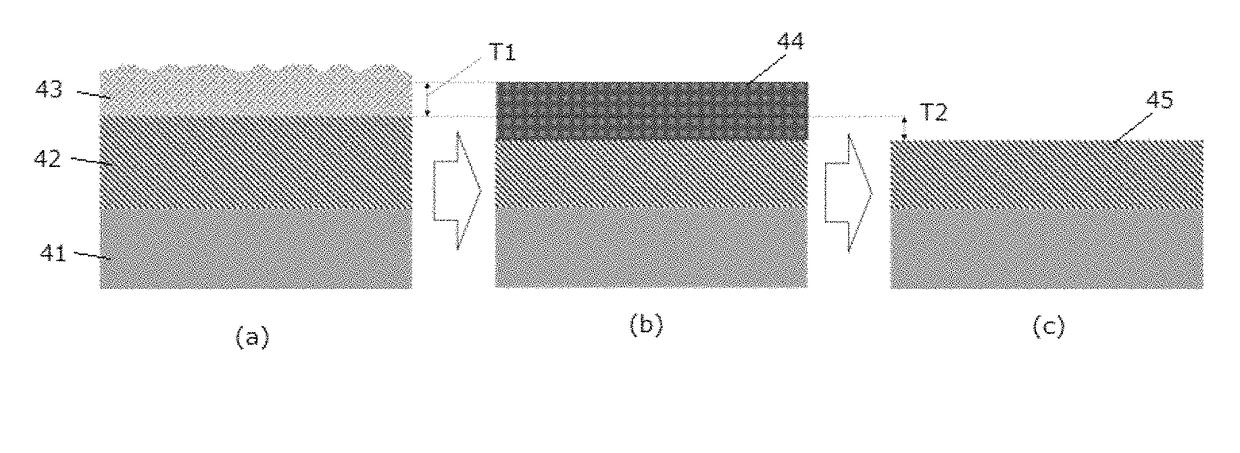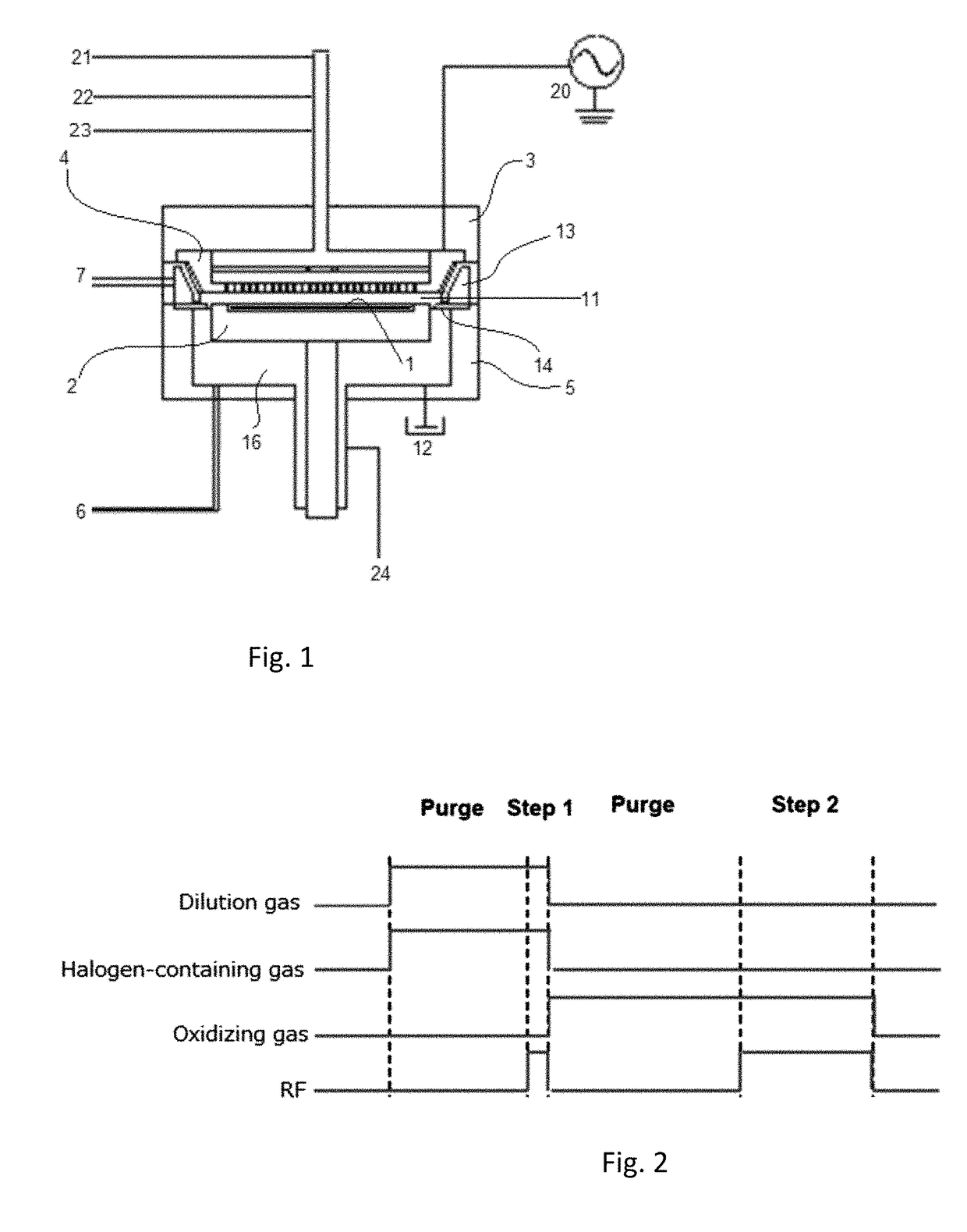Method of cyclic dry etching using etchant film
a technology of etching film and etchant, which is applied in the direction of basic electric elements, semiconductor/solid-state device manufacturing, electric devices, etc., can solve the problems of poor in-plane uniformity of etching of a film on a substrate by etchant, inability to achieve good in-plane uniformity of etching, and suffer from in-plane uniformity. achieve the effect of high controllability
- Summary
- Abstract
- Description
- Claims
- Application Information
AI Technical Summary
Benefits of technology
Problems solved by technology
Method used
Image
Examples
example 1
[0051]A silicon oxide film was formed at a thickness of 24 nm by PEALD on a 300-mm substrate. In Example 1, deposition of an etchant film and etching of the silicon oxide film were conducted under the conditions shown in Table 2 below using the plasma-assisted etching apparatus illustrated in FIG. 1. The sequence used in each etching cycle is shown in FIG. 2.
[0052]
TABLE 2(numbers are approximate)Conditions for depositionSubstrate temperature20° C.Pressure2.0 PaDeposition gasC4F8Noble gas (as a carrier gas Arand / or dilution gas)Flow rate of deposition gas10 sccm(etchant gas) (continuous)Flow rate of dilution gas90 sccm(continuous)RF power for a 300-mm wafer100 W; 60 MHzDuration of “Purge”120 secDuration of “RF” (Step 1)See FIG. 4 (“Deposition time [s]”)Growth rate per cycle (Å / cycle)6.9Film thickness (Å)6.9Conditions for etchingSubstrate temperature20° C.Pressure2.0 PaEtching gasO2Flow rate of etching gas50 sccm(continuous)RF power for a 300-mm wafer100 W; 60 MHzDuration of “Purge”12...
example 2
[0055]The etching process was performed in Example 2 according to Example 1 above, except that the deposition time (the duration of “RF” (Step 1)) was set at 2 seconds, and the etching time (the duration of “RF” (Step 2)) varied as shown in FIG. 5. FIG. 5 is a graph showing the relationship between etching rate per cycle (EPC) ({acute over (Å)} / cycle) and etching time per cycle (seconds) in Example 2.
[0056]FIG. 5 indicates that the depth of the etched portion of the silicon oxide layer (“Etch per cycle [{acute over (Å)} / cyc]”) increased as the etching time (“Etching time [s]”) increased; however, the depth of the etched portion reached a point near a plateau which is defined as a point where the depth of an etched portion no longer increases even when the etching time increases. This is because etching reaction took place only when the etchant film existed, and etching stopped when the etchant film was removed. In the above, in principle, “a point near a plateau” can be defined as a...
example 3
[0057]The etching process was performed in Example 3 according to Example 1 above, except that the deposition time (the duration of “RF” (Step 1)) was set at 2 seconds, the etching time (the duration of “RF” (Step 2)) was set at 60 seconds, and the number of etching cycles repeated varied as shown in FIG. 6. FIG. 6 is a graph showing the relationship between thickness of the SiO2 layer (nm) and number of cycles repeated in an etching process in Example 3.
[0058]FIG. 6 indicates that the thickness of the etchant film “depth of the etched portion of the silicon oxide layer (“SiO2 thickness (nm)”) decreased proportionally to the increase of the number of etching cycles (“Cycle number”). The relationship between the above two is substantially linear. That is, controllability of the etching process was very high since the etching process used a self-limiting or saturation process.
PUM
 Login to View More
Login to View More Abstract
Description
Claims
Application Information
 Login to View More
Login to View More - R&D
- Intellectual Property
- Life Sciences
- Materials
- Tech Scout
- Unparalleled Data Quality
- Higher Quality Content
- 60% Fewer Hallucinations
Browse by: Latest US Patents, China's latest patents, Technical Efficacy Thesaurus, Application Domain, Technology Topic, Popular Technical Reports.
© 2025 PatSnap. All rights reserved.Legal|Privacy policy|Modern Slavery Act Transparency Statement|Sitemap|About US| Contact US: help@patsnap.com



